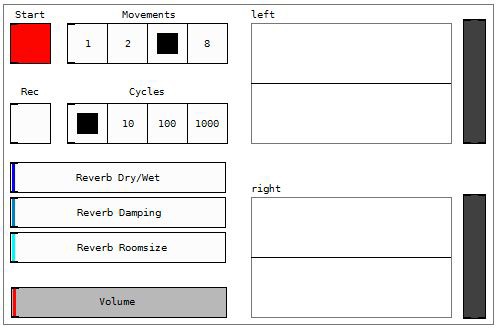Projects: Aletude no.1
Please use HEADPHONES.
This aleatoric work, entirely made with Pure Data, had a interesting didactical value to me, mainly because random (number) generation is not that obvious in the digital domain.
The idea behind is not that complex, a unrepeated random generator sets the oscillators frequencies, then the exact period is calculated from and used to set the envelope timing on amplitude.
Six simple sinewave oscillators have been used, three on the left channel, three on the right one, slightly detuned of plus one cent on the left and minus one cent on the right, so a kind of binaural effect is obtained. In both channels the first is the root, the other two are optional (yes or no) and are respectively third and fifth. So every trigger can generate a sound which can be monophonic, duophonic or a whole triad, randomly minor or major.
Reverb parameters are also controlled from the frequency (hz number) but differently driven using linearity, power and square root.
The patch is self playing, just needs a start and every time plays differently.
The work is divided in four movements, respectively with one, ten, a hundred and a thousand wave cycles, each one has a hundred events (triggers), no note is repeated in a single movement.
On the console all the parameters are real time printed, so a score can be drawn.
I've also made a second version of this patch where the number of movements and cycles can be manually set by user and real time changed, even reverb parameters are not automated but manually controlled.
April 2016, Headquarter.

Legend:
Number of trigger | Time (ms) | Root frequency (hz) | Left channel | Right channel
1 = yes, 0 = no, 3 = minor, 4 = major.
